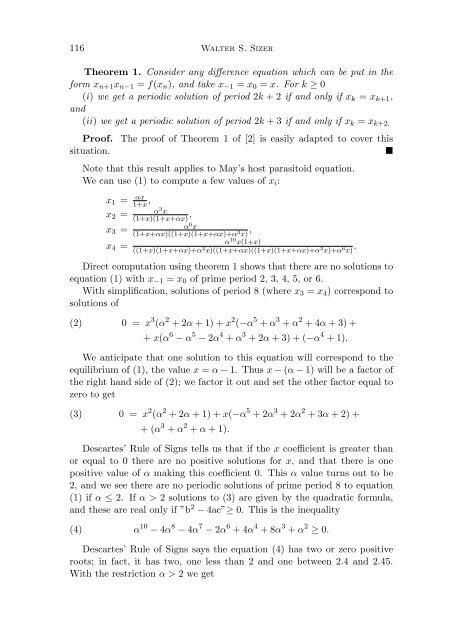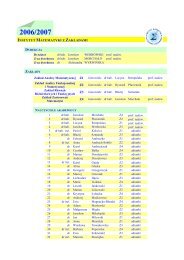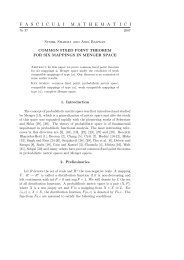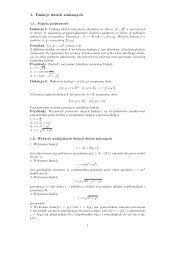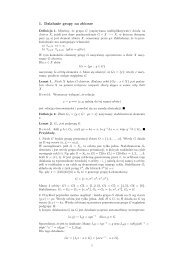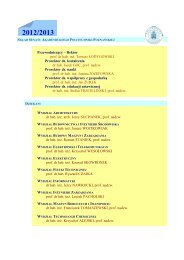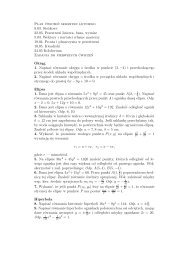F A S C I C U L I M A T H E M A T I C I
F A S C I C U L I M A T H E M A T I C I
F A S C I C U L I M A T H E M A T I C I
Create successful ePaper yourself
Turn your PDF publications into a flip-book with our unique Google optimized e-Paper software.
116 Walter S. SizerTheorem 1. Consider any difference equation which can be put in theform x n+1 x n−1 = f(x n ), and take x −1 = x 0 = x. For k ≥ 0(i) we get a periodic solution of period 2k + 2 if and only if x k = x k+1 ,and(ii) we get a periodic solution of period 2k + 3 if and only if x k = x k+2.Proof.situation.The proof of Theorem 1 of [2] is easily adapted to cover thisNote that this result applies to May’s host parasitoid equation.We can use (1) to compute a few values of x i :x 1 =x 2 =x 3 =x 4 =αx1+x ,α 3 x(1+x)(1+x+αx) ,α 6 x(1+x+αx)((1+x)(1+x+αx)+α 3 x) ,α 10 x(1+x)((1+x)(1+x+αx)+α 3 x)((1+x+αx)((1+x)(1+x+αx)+α 3 x)+α 6 x) .Direct computation using theorem 1 shows that there are no solutions toequation (1) with x −1 = x 0 of prime period 2, 3, 4, 5, or 6.With simplification, solutions of period 8 (where x 3 = x 4 ) correspond tosolutions of(2)0 = x 3 (α 2 + 2α + 1) + x 2 (−α 5 + α 3 + α 2 + 4α + 3) ++ x(α 6 − α 5 − 2α 4 + α 3 + 2α + 3) + (−α 4 + 1).We anticipate that one solution to this equation will correspond to theequilibrium of (1), the value x = α − 1. Thus x − (α − 1) will be a factor ofthe right hand side of (2); we factor it out and set the other factor equal tozero to get(3)0 = x 2 (α 2 + 2α + 1) + x(−α 5 + 2α 3 + 2α 2 + 3α + 2) ++ (α 3 + α 2 + α + 1).Descartes’ Rule of Signs tells us that if the x coefficient is greater thanor equal to 0 there are no positive solutions for x, and that there is onepositive value of α making this coefficient 0. This α value turns out to be2, and we see there are no periodic solutions of prime period 8 to equation(1) if α ≤ 2. If α > 2 solutions to (3) are given by the quadratic formula,and these are real only if ”b 2 − 4ac”≥ 0. This is the inequality(4) α 10 − 4α 8 − 4α 7 − 2α 6 + 4α 4 + 8α 3 + α 2 ≥ 0.Descartes’ Rule of Signs says the equation (4) has two or zero positiveroots; in fact, it has two, one less than 2 and one between 2.4 and 2.45.With the restriction α > 2 we get


